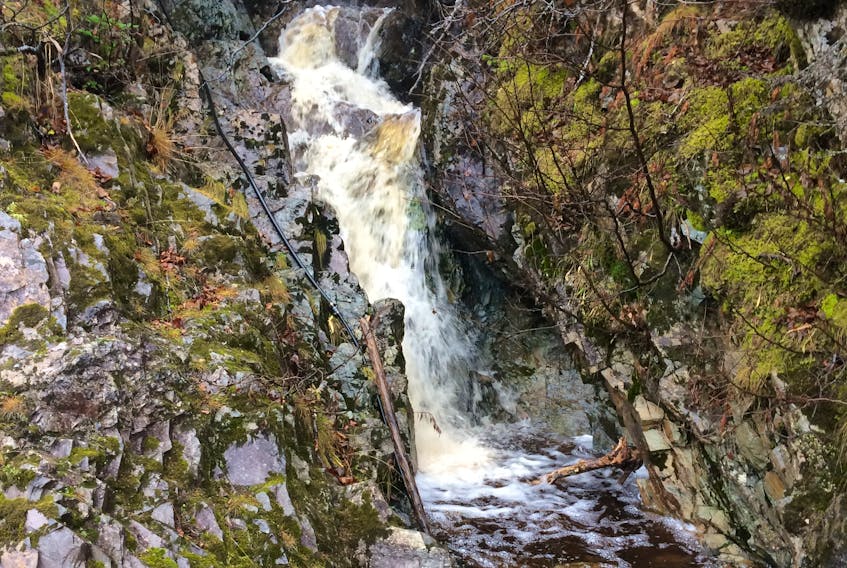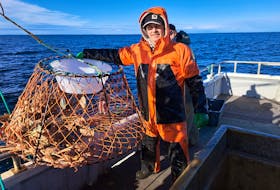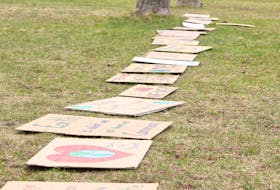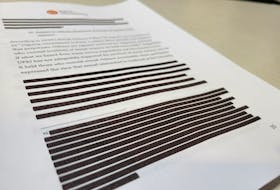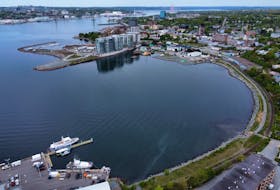I love watching the mayflies stagger. Even if they didn’t arrive before July on the Avalon this year, I enjoy watching the way they curve through the sky, a slow halting sweep on glassine wings as if held by a thread. And the way they touch down on water for a ballet-like instant of plié — and vanish inside a trout.

A week or so ago, I was out late on a river and managed to still be there when the sun crossed that critical setting point when your foreground goes dark, and everything in the distance becomes a brighter kind of colour. For me, that brighter colour, out in front of me like a glossy postcard, was an all-grown-over pond that’s now moose meadow.
I’m sure there’s water underneath, because the edges of the pond/pasture are regular and don’t grow in — the bright green reedy grass is all the same height, so in my imagination, it’s all like a version of floating bog. Water underneath — depth unknown —and more than a boot-full.
But something occurred to me then about the Avalon Peninsula that I haven’t been able to shake, and that’s how much surface water there is.
It’s something I’ve mentioned before, something that’s obvious from the sky if you get to fly in on a clear day. Maybe it’s a leftover of the shallow soils we have, the amount of dirt that was clawed off the Avalon and dropped as the Grand Banks in the last ice age — but the Avalon is pocked with watercourses. Rills, brooks, ponds, scrapes — it’s everywhere.
I’m back from a short trip to Nova Scotia, where lakes and ponds seem further apart and more used. Find a lake of any size at all, and it’s going to be rimmed with cottages like a ring of suds around a dishpan.
There should different language for a brook you can step over, a brook that you cross stone-to-stone, and the even slightly larger kind that requires you to find a wading-stick for a tripod balance.
Here, you might find spots like Ocean Pond or the Deer Park or even near Tors Cove that collect the same kind of cottage-rime, but far more of the water sources are too small for that. It’s almost as if they should have their own particular nomenclature — there should be, for example, a word for the sort of bog-pond that lasts for precisely half of July, before giving up the ghost and becoming a simple, untracked circle of wet, then damp, then dry and cracked peat.
I mean, we have floating bog and rattling bog, but that’s barely a start.
There should different language for a brook you can step over, a brook that you cross stone-to-stone, and the even slightly larger kind that requires you to find a wading-stick for a tripod balance.
I’ve invented my own names for waterfalls for years: chute falls, where a river shoots down a channel and over a vertical drop without touching the cliff it is travelling over. Ruler falls, for the spot where a big brook goes directly over a fault, so that, even from something as little as a short distance away, the brook just seems to vanish. Bowl falls, corner falls, step-falls — you can imagine those.
There are seeps and stands and steadies, beaver ponds and wallows.
We’re lucky to have all of it — even though, in most of the places on the edges of our urban centres, we treat it absolutely terribly. I’ve seen rivers in St. Philip’s with car batteries tossed in to break up and break down, office chairs and spare wheels pitched into the sad boxed-in water that makes its way through and around industrial parks.
Everything from worm bins to Vienna Sausage tins, as far in a river as two feet and an ATV would carry you.
A lot of people don’t have this, and even if they did, would never actually have access to it.
Familiarity truly does breed contempt.
Russell Wangersky’s column appears in 39 SaltWire newspapers and websites in Atlantic Canada. He can be reached at [email protected] — Twitter: @wangersky.

